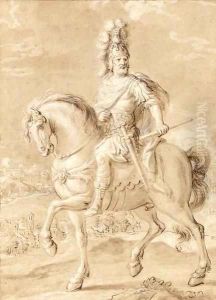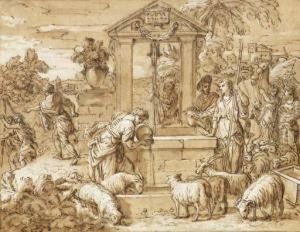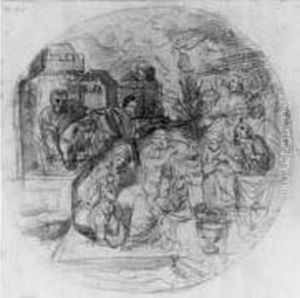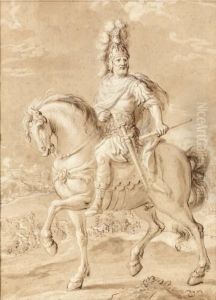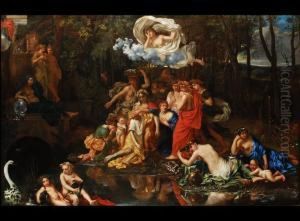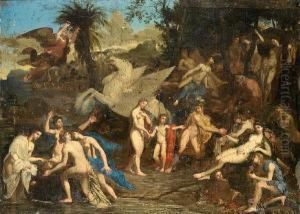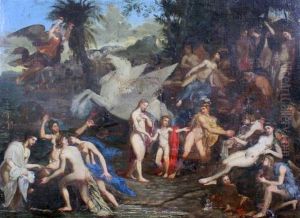Pierre Mosnier Paintings
Pierre Mosnier was a French painter and engraver, born in 1641 in Joigny, France. His artistic journey began under the guidance of his father, who was also an artist, before he ventured to Paris to further his education and craft. In Paris, Mosnier became a student of Sébastien Bourdon, a renowned French painter and etcher, who was part of the founding members of the Académie royale de peinture et de sculpture. Under Bourdon's mentorship, Mosnier honed his skills, particularly in the Baroque style, which was prevalent during this period. His works, characterized by their rich emotional depth and vibrant compositions, often drew upon religious and mythological themes, reflecting the Baroque era's interest in dramatic subjects and elaborate ornamentation.
Throughout his career, Mosnier enjoyed considerable success and recognition. He was admitted to the Académie Royale in 1675, a significant achievement that underscored his reputation as a talented and respected artist within the French art community. His contributions to the academy and his artistic accomplishments led him to receive commissions from some of the most influential figures and institutions of his time, including the French nobility and the Catholic Church. Mosnier's works were celebrated for their elegance, detailed portrayal of figures, and the harmonious interplay of colors and light, which brought his subjects to life with a remarkable sense of realism and vitality.
Despite his success, Pierre Mosnier's life and career were not without challenges. The changing tastes of the art world towards the end of the 17th century saw a shift away from the Baroque style, with a growing preference for the Rococo and the nascent Neoclassicism. This transition affected Mosnier's work's reception and demand, yet he continued to paint, adapting his style while maintaining his unique artistic voice. Mosnier's legacy, though not as widely recognized today as some of his contemporaries, remains significant in the study of French Baroque art. His paintings and engravings continue to be appreciated for their craftsmanship and emotional depth, offering insights into the artistic trends and cultural dynamics of his time. Pierre Mosnier passed away in 1703, leaving behind a body of work that continues to be studied and admired for its contribution to the Baroque movement in France.
